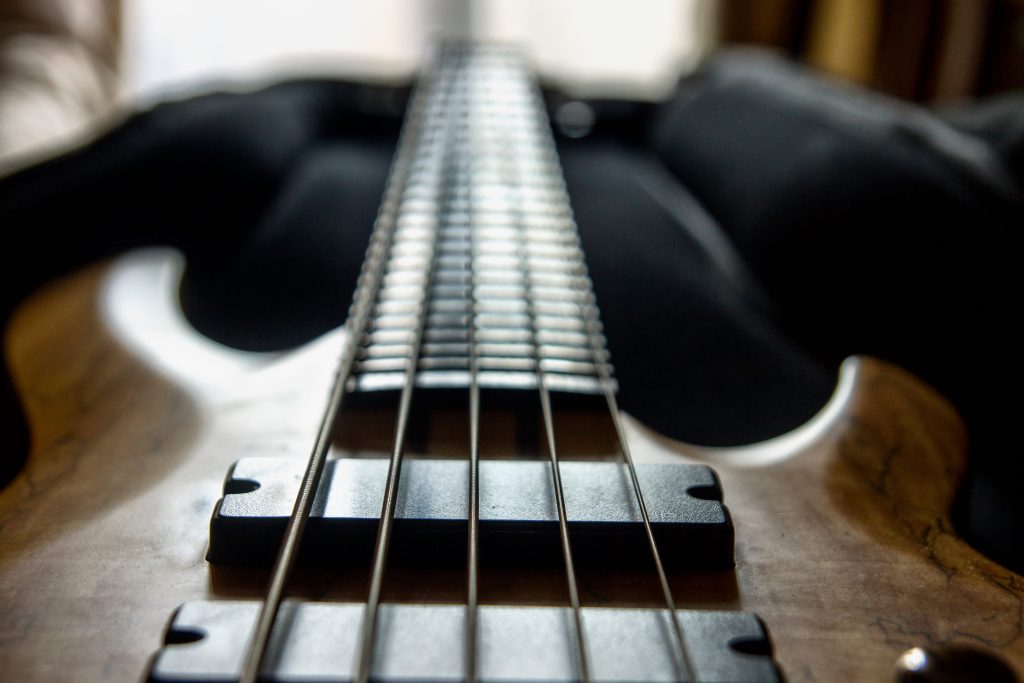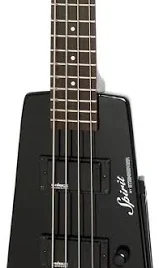Why is my bass neck warped? Causes, Prevention, and Solutions
Why is my bass neck warped? It ca be alarming. Bass neck warping is a common issue that can affect even meticulously maintained basses. There is not only cause and effect but common fixes.
Understanding Bass Neck Warping
A warped neck occurs when the neck of your bass guitar becomes twisted, bowed, or deformed from it’s original shape. This can lead to a host of playability issues, including fret buzz, intonation problems, and an overall uncomfortable playing experience.
The Nature of Wood
Wood forms the backbone of most bass guitars, cherished for it’s tonal properties and visual appeal. However, wood is a living, breathing material that responds to it’s environment.
It’s hygroscopic nature means it absorbs and releases moisture from the surrounding air. While this property helps trees thrive in nature, it can cause significant problems for our carefully crafted instruments.
As humidity levels fluctuate, wood expands and contracts. Over time, these subtle movements can lead to warping, especially in necks made from a single piece of wood. Different wood species react differently to environmental changes.
Maple, a popular choice for bass necks, tends to be more stable than softer woods like mahogany. However, even within the same species, the cut of the wood plays a crucial role in stability.
Quarter-sawn lumber, where the growth rings are perpendicular to the widest face of the board, offers superior dimensional stability compared to flat-sawn lumber. This is why many high-end basses feature quarter-sawn necks – they’re less prone to warping and twisting over time.
The Climate Conundrum: Temperature and Humidity
Temperature and humidity are the primary culprits behind neck warping. Extreme temperature fluctuations cause rapid expansion and contraction of wood fibers, potentially leading to cracks or warping.
This is why leaving your bass in a hot car or near a heater can be disastrous for it’s health.
Humidity arguably plays an even bigger role in neck warping. In high-humidity environments, wood absorbs moisture and swells. In dry conditions, it releases moisture and shrinks.
These dimensional changes can cause the neck to bow, twist, or develop an uneven surface.
Climate change has introduced new challenges for bass maintenance. As global weather patterns become more erratic, bassists need to be increasingly vigilant about protecting their instruments from extreme conditions.
Investing in a good case and being mindful of where you store your bass can go a long way in preventing climate-related damage.
String Theory: The Constant Pull
While environmental factors play a significant role in neck warping, we can’t ignore the constant force exerted by the strings. Bass strings, particularly heavier gauge ones, put a tremendous amount of tension on the neck.
Over time, this tension can cause the neck to bow forward, especially if the truss rod isn’t properly adjusted.
The Unsung Hero: The Truss Rod
Speaking of truss rods, these underappreciated components are the underappreciated pillars of neck stability. Invented in the 1920s by Gibson Guitar Corporation, a truss rod is a metal rod inserted into the neck that can be adjusted to counteract string tension and maintain proper neck relief.
Without it, our basses would be much more prone to warping.
Proper truss rod adjustment is crucial for maintaining a straight neck. A neck that’s too straight can lead to fret buzz, while too much relief can make the bass difficult to play.
Regular checks and adjustments of your truss rod can prevent many warping issues before they become serious problems.
Buy Bass Guitar Necks on Amazon
Construction Matters: Building for Stability
The way a bass neck is constructed significantly influences it’s susceptibility to warping. Traditional solid wood necks, while beloved for their tone, are more prone to warping than some modern choices.
In the 1970s, companies like Alembic pioneered the use of multi-laminate necks. These necks are made from many pieces of wood with opposing grain directions, providing improved stability.
Some manufacturers have taken this concept even further, incorporating materials like graphite or carbon fiber into neck construction for added rigidity.
The debate between bolt-on, set-neck, and neck-through designs also factors into the warping equation. Each has it’s pros and cons when it comes to stability:
- Bolt-on necks are easier to adjust and replace if severe warping occurs, but the joint between the neck and body can be a weak point.
- Set necks offer better sustain and resonance, but they’re more difficult to repair if warping occurs.
- Neck-through designs are often touted as the most stable, providing excellent sustain and access to upper frets. However, if warping does occur, repairs can be complex and costly.
Books on Bass Guitar Maintenance on Amazon
Preventing the Warp: Proactive Bass Care
Now that we understand why bass necks warp, let’s talk prevention. Here are some steps you can take to keep your bass neck straight and true:
Climate Control
Store your bass in a controlled environment. Use a hygrometer to watch humidity levels and consider using a humidifier or dehumidifier if needed. Aim for a relative humidity between 45-55% for optimal instrument health.
Proper Storage
Always store your bass in it’s case when not in use. Avoid leaning it against walls for extended periods, as this can put uneven pressure on the neck.
If you must display your bass, use a proper stand that supports the body without putting stress on the neck.
Regular Maintenance
Keep an eye on your neck relief and truss rod adjustment. Small tweaks can prevent bigger problems down the line.
Learn to check your neck relief using the string-and-fret method, and don’t be afraid to make minor truss rod adjustments when needed.
String Smart
Be mindful of string gauge and tension. If you’re using particularly heavy strings, you may need to adjust your truss rod more often.
Consider using a balanced-tension string set to distribute the load more evenly across the neck.
Travel Wisely
When traveling with your bass, be aware of temperature changes. Let your instrument acclimate slowly to new environments.
If you’re flying, try to carry your bass on board with you.
If that’s not possible, loosen the strings slightly to reduce tension during the flight.
Straightening the Curve: Addressing Warped Necks
If you find yourself with a warped neck, don’t panic. Many cases of neck warping can be addressed with proper care and adjustment.
Here’s a step-by-step approach:
1. Assess the Situation
Determine the extent of the warping. Is it a simple bow that can be adjusted with the truss rod, or is there twisting or more severe deformation?
Use a straightedge along the fretboard to identify any high or low spots.
2. Truss Rod Adjustment
For simple bowing, a truss rod adjustment may be all that’s needed. Turn the truss rod nut clockwise to add relief (counteract back bow) or counterclockwise to reduce relief (counteract forward bow). Make small adjustments, about 1/4 turn at a time, and recheck often.
Allow the neck to settle for a few hours between adjustments.
3. Humidity Correction
If the warping is because of extreme dryness or humidity, slowly bring the bass back to proper humidity levels. This may fix minor warping on it’s own.
Use a case humidifier or dehumidifier as needed, and be patient – this process can take several days or even weeks.
4. Heat and Pressure
For more severe warping, some luthiers use controlled heat and pressure to reshape the neck. This is a delicate process best left to professionals.
It involves carefully heating the neck to make the wood more pliable, then applying pressure to fix the warp.
This technique needs specialized equipment and expertise to avoid damaging the instrument.
5. Fretboard Planing
In cases of twisted necks, the fretboard may need to be planed to create an even playing surface. This involves carefully removing material from the fretboard to level it out.
It’s a complex process that needs precision and should only be attempted by a skilled luthier.
6. Neck Replacement
In extreme cases where the neck is severely warped or twisted, replacement may be the best option. While this can be costly, it’s often less expensive than replacing the entire instrument and can breathe new life into a beloved bass.

The Road to Bass Mastery
Understanding and addressing neck warping is an essential skill for any serious bassist. It’s part of the process from novice to expert, teaching us about the nature of our instruments and how to care for them properly.
As you become more attuned to your instrument, you’ll start to notice subtle changes in playability that might show the early stages of warping. This awareness allows you to take corrective action before small issues become big problems.
To deepen your understanding, try this exercise: Monitor your bass’s neck relief over the course of a year, noting any changes in relation to seasonal weather patterns. This will give you a practical understanding of how environmental factors affect your specific instrument.
Remember, every bass is unique, and what works for you may not work for another. The key is to stay observant, be proactive in your maintenance, and don’t hesitate to seek professional help when needed.
By mastering the art of neck care, you’re not just preserving your instrument – you’re ensuring that it will continue to play and sound it’s best for years to come. A well-maintained bass is a joy to play, allowing you to focus on what really matters: making great music.
Advanced Techniques for Neck Stability
For those looking to take their bass maintenance to the next level, there are several advanced techniques and technologies worth exploring:
Carbon Fiber Reinforcement
Some manufacturers and custom builders are incorporating carbon fiber rods or strips into their neck designs. This adds significant stability without adding much weight.
While it’s not typically a DIY modification, it’s worth considering if you’re having a custom instrument built or are looking for a bass with exceptional stability.
Titanium Truss Rods
Titanium truss rods offer superior strength and stability compared to traditional steel rods. They’re lighter and more responsive to adjustments, allowing for finer control over neck relief.
Some high-end basses come equipped with titanium truss rods, but they can also be installed as an aftermarket upgrade by a skilled luthier.
Multi-Scale (Fanned Fret) Designs
Multi-scale or fanned fret basses use a graduated scale length across the strings. This design can help reduce tension on the neck while providing improved intonation and ergonomics.
While primarily chosen for tonal and playing comfort reasons, the reduced tension can contribute to long-term neck stability.
Temperature-Compensating Truss Rods
Some innovative builders are experimenting with bi-metallic truss rods that automatically adjust to temperature changes. These rods expand or contract in response to temperature fluctuations, helping to maintain consistent neck relief in varying conditions.
The Future of Bass Neck Design
As technology advances, we’re likely to see new materials and construction techniques that further improve neck stability. Some areas to watch include:
- 3D-printed components: Custom-designed, 3D-printed neck reinforcements could offer tailored solutions for specific instruments.
- Smart materials: Shape-memory alloys or other responsive materials could be incorporated into neck design to automatically adjust to environmental changes.
- Hybrid materials: Combining traditional tonewoods with modern composites could offer the best of both worlds – classic tone with enhanced stability.
Caring for Vintage and Rare Basses
Vintage and rare basses present unique challenges when it comes to neck warping. These instruments often have historical or collectible value that needs to be preserved, making invasive repairs less desirable.
Here are some special considerations for these prized instruments:
Gentle Humidity Control
Use passive humidity control methods like silica gel packs or two-way humidity control packets in the case. These help maintain stable humidity without risking over-humidification.
Minimal Adjustments
When dealing with vintage instruments, it’s best to make only minimal, necessary adjustments. Consult with a luthier who specializes in vintage instruments before making any significant changes.
Documentation
Keep detailed records of the instrument’s condition, including regular measurements of neck relief and any adjustments made. This documentation can be valuable for both maintenance and preserving the instrument’s provenance.
Custom Cases
Consider investing in a custom-fitted, climate-controlled case for extremely valuable or sensitive instruments. These cases can provide an extra layer of protection against environmental fluctuations.
The Role of Playing Technique
While we’ve focused primarily on the physical aspects of neck warping, it’s worth noting that playing technique can also impact neck stability over time. Excessive force when fretting or aggressive slapping and popping can put additional stress on the neck.
Developing a light touch and efficient technique improves your playing but can also contribute to the long-term health of your instrument.
Educating the Bass Community
As bassists, we have a responsibility to share knowledge and help preserve the instruments we love. Consider organizing or participating in workshops on bass maintenance at your local music store or bass club.
Sharing your experiences and learning from others can help raise awareness about proper instrument care and prevent unnecessary damage to beloved basses.
Frequently Asked Questions
What causes a bass guitar neck to warp?
Bass guitar necks can warp because of changes in humidity and temperature, constant string tension, improper storage, and manufacturing defects. Environmental factors are the most common culprits, as wood expands and contracts with changes in moisture content.
How often should I adjust my bass truss rod?
There’s no fixed schedule for truss rod adjustments. Check your neck relief every few months or when you notice changes in playability. Seasonal changes often necessitate small adjustments. Always make small, incremental changes and allow the neck to settle before further adjustments.
Can a severely warped bass neck be fixed?
Many warped necks can be corrected through proper humidity control, truss rod adjustment, or professional repair techniques. However, severely warped necks may need fretboard planing or, in extreme cases, neck replacement. A skilled luthier can assess the best course of action.
Are multi-laminate necks more stable than one-piece necks?
Generally, multi-laminate necks are more stable than one-piece necks. The alternating grain directions in laminated necks help resist warping. However, well-constructed one-piece necks from quality, properly seasoned wood can also be very stable.
How does climate affect bass neck warping?
Climate significantly affects neck warping. High humidity causes wood to absorb moisture and swell, while low humidity leads to shrinkage. Temperature changes can also cause expansion and contraction. Consistent climate control is crucial for maintaining neck stability.
What’s the ideal humidity range for storing a bass guitar?
The ideal relative humidity range for storing bass guitars is generally between 45-55%. This range helps prevent the wood from becoming too dry or absorbing excess moisture, both of which can lead to warping.
Can changing string gauge affect neck warping?
Yes, changing string gauge can affect neck warping. Heavier strings exert more tension on the neck, potentially causing it to bow forward. When significantly changing string gauge, you may need to adjust the truss rod to compensate for the change in tension.
How do carbon fiber necks compare to wood in terms of stability?
Carbon fiber necks are extremely stable and resistant to warping. They’re less affected by temperature and humidity changes compared to wood. However, they offer a different tonal character that may not be suitable for all playing styles or preferences.
Is it normal for a new bass to need neck adjustments?
It’s not uncommon for new basses to need minor adjustments as they settle. New instruments may experience slight changes as they acclimate to their environment and the tension of the strings. Regular check-ups during the first few months of ownership are recommended.
How can I prevent neck warping when traveling with my bass?
To prevent neck warping when traveling, use a high-quality, well-padded case. Loosen the strings slightly to reduce tension. If flying, try to carry your bass on board. For road trips, avoid leaving the instrument in a hot car. Allow the bass to acclimate slowly to new environments upon arrival.
Key Takeaways
- Bass neck warping is primarily caused by environmental factors like humidity and temperature changes.
- Regular maintenance, including proper storage and truss rod adjustments, can prevent most warping issues.
- Different neck constructions (one-piece, multi-laminate, carbon fiber) offer varying degrees of stability.
- Most cases of neck warping can be addressed through proper care and adjustment.
- Severe warping may need professional intervention, including heat treatment or fretboard planing.
- Vintage and rare basses need special care to preserve their value and playability.
- Educating yourself and others about proper bass care helps preserve these instruments for future generations.




